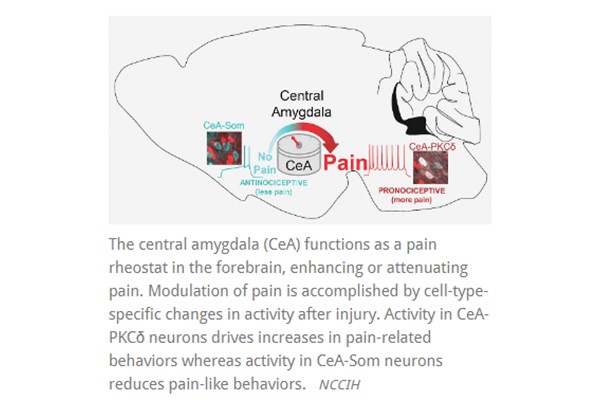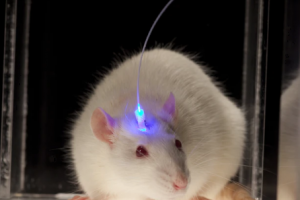NIH study in mice explains how brain can turn pain signals up or down
A new study in mice uncovered a previously unknown role that the central amygdala can play in upgrading or downgrading pain signals in the brain’s circuitry.
A new study in mice uncovered a previously unknown role that the central amygdala can play in upgrading or downgrading pain signals in the brain’s circuitry. The study, published in Cell Reports, was conducted by researchers at the Division of Intramural Research at the National Center for Complementary and Integrative Health (NCCIH), part of the National Institutes of Health.
“We know that pain is not static and that it can be modulated by several factors. Early research showed that the central amygdala, long known for its role in processing fear, can dial up pain signals. Yet, other studies have pointed to the central amygdala’s role in suppressing pain, or prompting an analgesic response,” said Yarimar Carrasquillo, Ph.D., senior author of the study and lead scientist for the Behavioral Neurocircuitry and Cellular Plasticity Section in the NCCIH Intramural Division. “This study unravels what seemed to be a contradiction in early research and reveals a previously hidden ‘switch’ in the central amygdala that can turn up or turn down pain signals.”
Refer to the this link to continue reading.





Related Posts